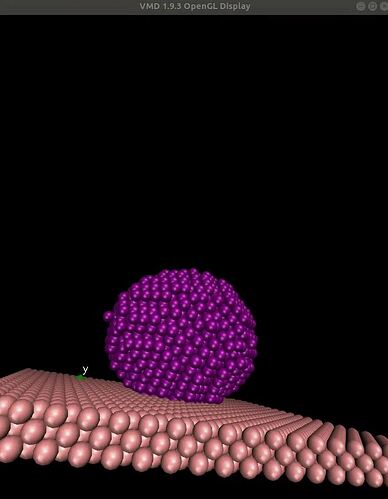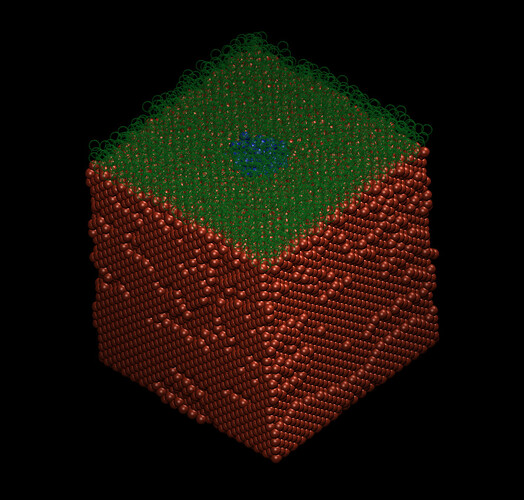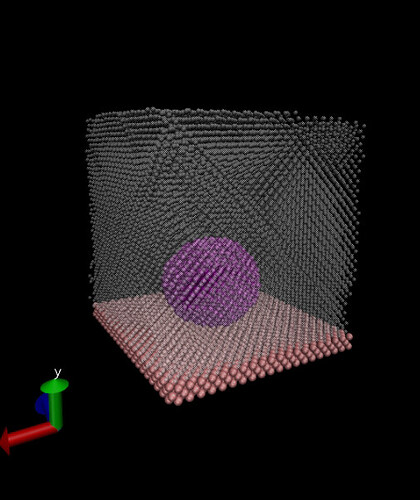Hey everyone,
I am trying to simulate a case of a droplet spreading onto a solid wall, with changing contact angles. I have initialized a wall and two LJ-type fluids. Currently, the system is running fine, but my droplet is not spreading onto the surface. I am aware that this spreading behavior comes from the value of epsilon that is chosen between the LJ fluid and the wall, but no matter the value chosen, I see no spreading happening.
Any help would be greatly appreciated!
processors 1 1 1
#System parameters
variable rho equal 1
variable T equal 1
variable rc equal 2.9
# Domain size and walls
variable x equal 20
variable y equal 24
variable z equal 20
variable wallwidth equal 1.0
# Set outside of domain to be wall
variable ylo equal -${wallwidth}
#Thermostatted region outer half of wall
variable ythemlo equal -0.5*${wallwidth}
#Add a buffer of empty space to prevent molecules moving too far they leave the domain
variable buf equal 2.0
variable ylobuf equal ${ylo}-${buf}
#Basic simulation setup
units lj
dimension 3
atom_style full
#neigh_modify delay 0 every 1
boundary p f p
lattice fcc ${rho}
region simbox block 0 $x ${ylobuf} ${y} 0 $z
create_box 3 simbox
region latticeregion block INF INF ${ylo} ${y} INF INF
create_atoms 1 region latticeregion
#Set wall region
region lower block INF INF ${ylo} 0.0 INF INF
group lower region lower
set group lower type 2
group wall union lower
#Set 3rd particle region
region side sphere 10 5 10 5
group side region side
set group side type 3
#Create lj pair styles and set wall/site terms to zero
mass * 1.0
pair_style lj/cut ${rc}
pair_coeff 1 1 1.0 1.0
pair_coeff 2 2 1.0 1.0
pair_coeff 3 3 1.0 1.0
pair_coeff 2 3 4 0.93
#Set thermostatting region
region lowertherm block INF INF ${ylo} ${ythemlo} INF INF
group lowertherm region lowertherm
group nottherm subtract all lowertherm
#Get liquid molecules to a flow group
fix 1 all nve
fix 2 lowertherm langevin $T $T 0.1 498094
# 4) Visualization
thermo 100
dump mydmp all atom 100 dump.lammpstrj
#Equilibration
run 100000


